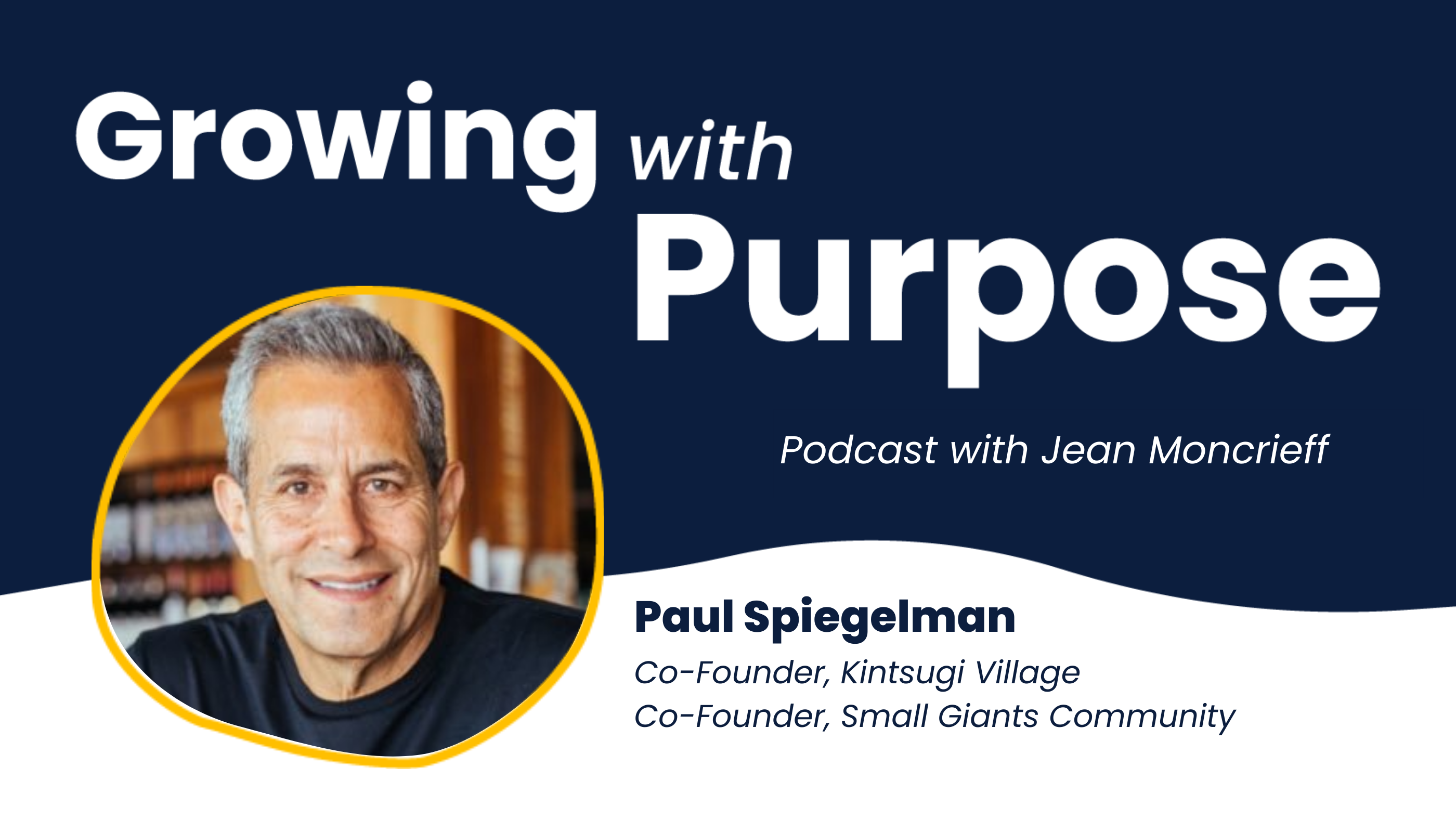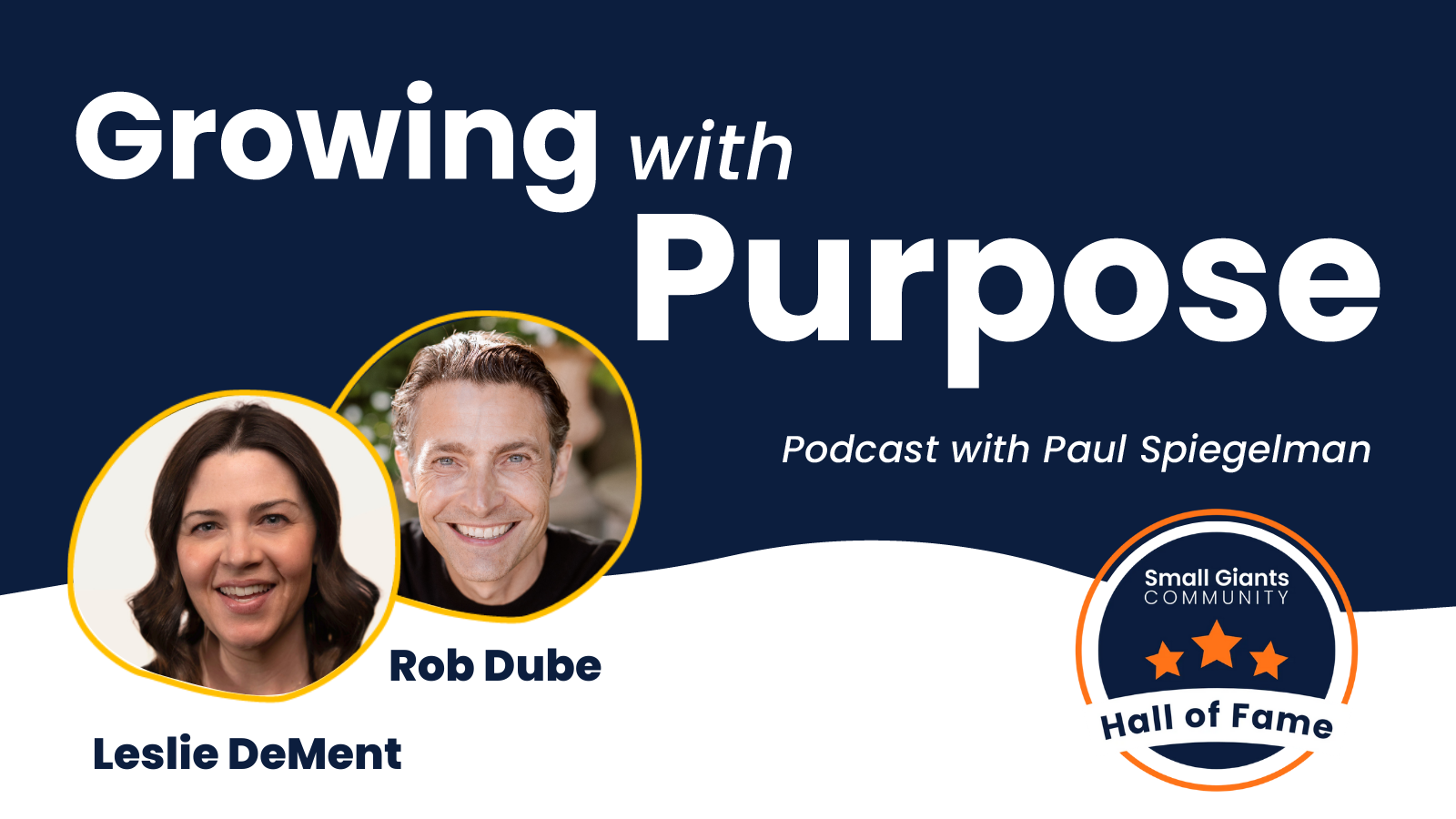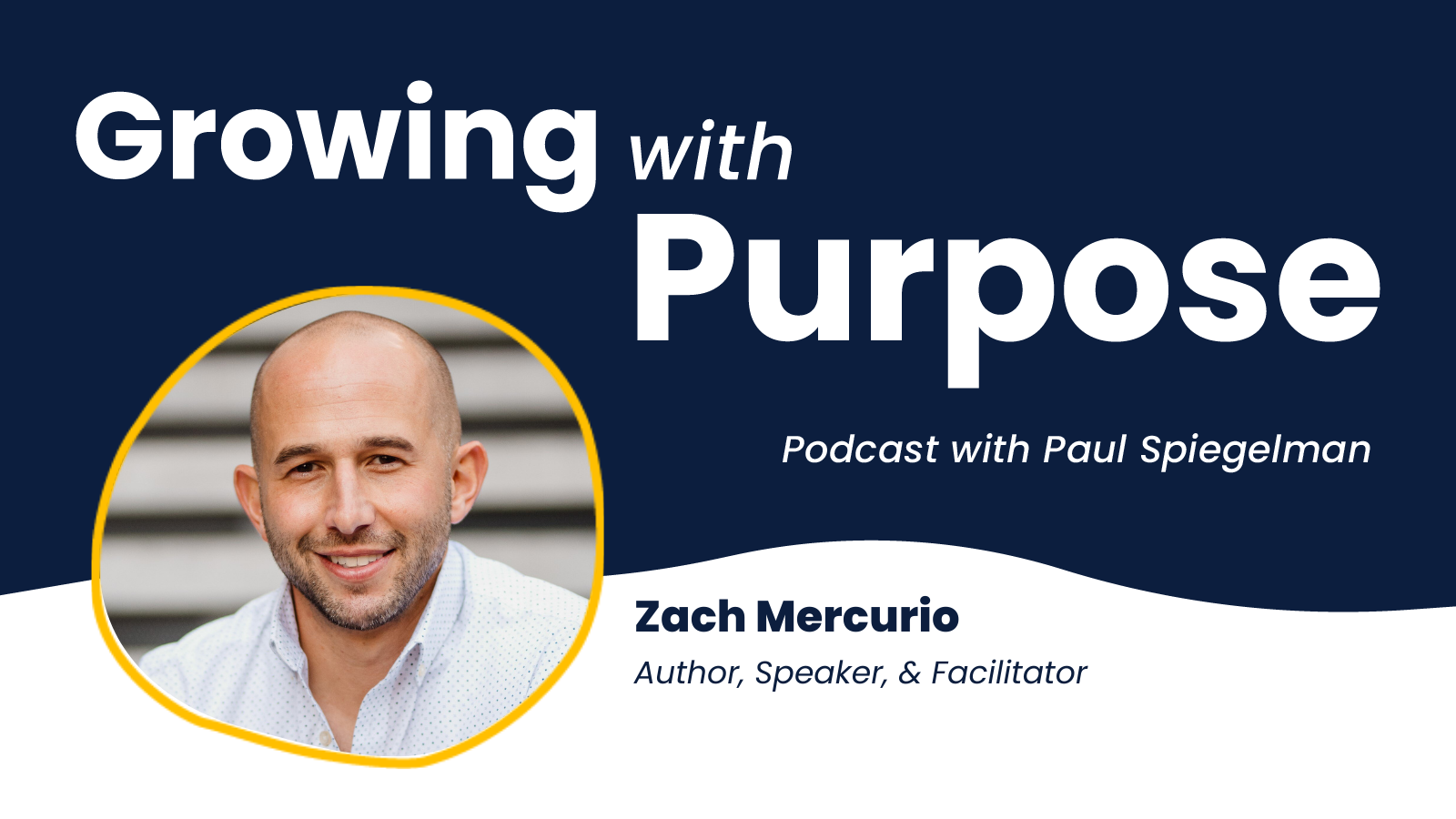How to Cultivate the Growth of Your Next Gen Leaders

As we open applications for the Small Giants Leadership Academy, it’s a perfect time to reflect on the strategies to develop and grow the next generation of leaders that are rising to have more responsibilities and make higher level operational and strategic decisions.
Here are 7 ways that Small Giants companies are supporting their teams to grow and lead in aligned and purposeful ways.
1. Align around goals
Offering clarity around organization, team, and individual goals and how they tie back to the guiding purpose and values is an important first step to helping leaders know the direction you’re headed. Choice One Engineering, MACKEY, Arkadium, and Venturity Financial Partners are examples of Small Giants companies who have developed effective and transparent goal-setting strategies to drive employee engagement and performance. By aligning individual and organizational goals, fostering trust, and using tools like open-book management, these companies ensure clarity and accountability to not only boost productivity but also create a supportive and motivated work environment. Learn more about their methods and practices here.
2. Foster continuous learning
From attending workshops and conferences, to taking courses and getting certifications, there are lots of ways to give your rising leaders more opportunities to build skills and knowledge. Encouraging learning and development also requires the opportunity to share back with the team and the encouragement to incorporate and try out new ideas. “Walking the talk” in this way shows employees that their company actually cares about curiosity and learning, and it further provides them with a boost in confidence to grow into their potential.
One example of a Small Giants who has embedded learning into its culture is Thinslices, This Romanian software company has committed to organization-wide learning by formalizing continuous education for all employees. They use agile methods like SCRUM and Jira to manage learning projects, require 5 hours of weekly learning, and offer 10 paid learning days annually. This structured approach tracks learning hours and documentation, significantly boosting engagement and reducing turnover. Read more here about how their unique strategy fosters a thriving learning culture and enhances overall employee development.
3. Prioritize mentorship
There are countless business benefits of mentorship -- from increases in retention and employee satisfaction, to impacting the bottom line. MentorcliQ’s 2023 research study found that profits of Fortune 500 companies with mentorship programs were 2x higher than companies without. Whether you develop an internal mentorship program or give your employees access to mentors outside of the company, it’s a critical way to invest in and support your leaders.- M2 Strategy is an example of a Small Giants who has developed an internal mentorship program. Their Mentorship, Advancement, and Performance (MAP) program exemplifies how they’ve successfully built a culture of mentorship. M2 Strategy empowers employees to choose their mentors, set S.M.A.R.T goals and train mentors in alignment with company values. Regular check-ins replace annual reviews, which ensures continuous growth and innovation. Read more here about how this approach fosters employee development and embeds mentorship deeply into their company culture.
- Sounding Board, Small Giants’ mentorship program, is a way to connect your employees directly with an aligned and trusted mentor. Small Giants can offer your team the benefits of mentorship without all of the internal programmatic work. Listen to this episode of our Growing with Purpose podcast to hear more about the impact Sounding Board has had on fellow leaders.

4. Develop consistency in feedback and evaluations
Effective communication is crucial for personal and team development. When feedback is given in a timely and people-oriented way, it can transform challenging conversations into opportunities for growth and stronger relationships. Focus on the systems you can put in place to offer your leaders feedback - both positive and constructive - to boost engagement and help them progress personally and professionally.
- How to approach performance evaluations: Life’s Abundance is an example of a Small Giants company who has replaced annual reviews with monthly self-assessments, fostering continuous feedback and growth. PFSbrands is another company who established 360 degree reviews for leaders to model feedback receptivity, enhancing overall company culture. Read more about these examples of effective evaluation practice here.
- How to approach feedback: Read these key tips from Claire Lew about how to approach feedback from a place of care, while being specific and open to creating a dialogue driven by curiosity. This method helps build a culture of trust and continuous improvement.
5. Have a path for leadership development
Opportunities for growth can be a motivator for next gen leaders. No matter the size of your organization, you can be clear (and creative) with the opportunities for growing and advancing your leaders.
One way to invest in your rising leaders is to have them participate in a program like the Small Giants Leadership Academy. This 9-month cohort learning experience elevates leaders through the foundations of Small Giants philosophies. It blends virtual and in-person learning in ways that encourage reflection, personal development, and practical real-time implementation. Read more about the journeys of some Leadership Academy graduates here.
To dig deeper into how to build employee development pathways and programs - from internship pipelines to individual career development plans - watch this Small Giants panel of leaders here.
6. Support work-life balance & wellbeing
As Small Giants, we care about our people. We care about them at work and outside of it. And we want what is best for them. Having, modeling, and supporting balance and wellbeing is at the core of caring for people.
Small Giants companies are known for leading by example when it comes to implementing thoughtful and consistent practices to support the wellbeing of their people. For example, Kornel Gyrgo at Tasty Catering is intentional about building personal relationships and having personal conversations that allow him to uncover disruptors that might affect someone’s ability to be their best self. Keith Stout at Ace Metal Crafts advocates for transparency and a solution-oriented mindset that supports frequent check-ins to balance productivity and mental health needs. Read more here.
Offering wellness programs that address physical, mental, and emotional health or implementing policies that enable employees to have a balance is an important step. As a reminder from Jervis DiCicco, these kinds of benefits only work if employees have the time to take advantage of them.
7. Celebrate your people!
Small Giants put their people first, and recognizing and rewarding teams is always at the forefront! From formal recognition programs that publicly celebrate an individual for their work, to informal and casual expressions of gratitude, rewards and recognitions can go a long way to reinforcing the company culture and motivating leaders. Research from Gallup and Workhuman even found a correlation between employee recognition and an employee’s level of wellbeing - employees who receive the right amount of recognition for their work experience lower burnout, perform at higher levels, and have stronger relationships at work! Read more here about some unique ways to reward your employees.
By integrating these strategies, you can create an environment that not only encourages professional growth but also aligns with the values and philosophies of the Small Giants Community. This holistic approach ensures that leaders are well-equipped to drive your company forward, while staying true to its core values and purpose.
The next time you’re looking to revamp your company’s benefits package, consider giving your employees less homework and more reason to be excited to come to work. The start could be as simple as asking employees what fuels them, and finding ways to help them dig deeper into that.





Submit Your Comment